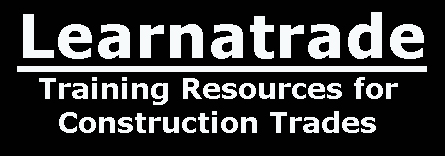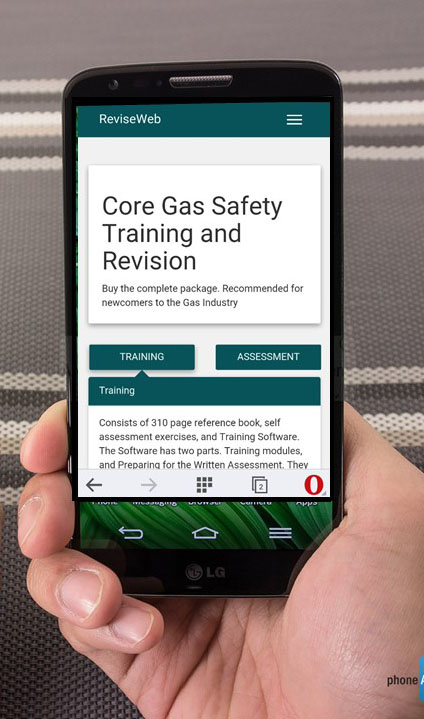Now compatible with
Mac, iPad, iPhone, Tablets, Smartphone, Android!
For a guided tour (on film) Click HERE
Core Gas Safety Study Book
This package consists of a training and reference manual, a Self Assessment package, and access to on-line interactive support material.
What is in the Book
The book has over 250 pages with large print in full colour making it easy to read, and friendly to use. The book has a comprehensive index enabling you to find the information you need quickly and easily.
The aim being to give you enough information to give you a full understanding of Core Gas Safety, both practical and theoretical
The regulations:
The regulations have an in-depth index based on a 'key word' system which will take you straight to the information you require.
If, for instance, if you should ever need to know what is meant by work in relation to a gas fitting – all you have to do is look up the key word ‘work’ in the index and you will be directed to the page, and the regulation you need.
The course notes:
The book is divide into twelve sections covering the modules shown below in the on-line software section.
Again, the book has a comprehensive index which will help you find information quickly and easily.
The on-line package has two separate sections
1. Core Gas Safety Modules
2. Preparing for the written Assessment.
Part 1. The Modules.
Ventilation:
The purpose of ventilation.
Latent Heat
Adventitious air
Gross and Nett CV
Calculating the ventilation requirements of Gas Appliances – Unflued, open flue, compartment ventilation, multi-appliance ventilation.
Vents:
Measuring Free air area and identification of unsuitable vents:
Covers Terracotta and plastic vents.
Gas Rates and Heat input:
Calculating Gas Rates and Heat input in both Kilowatts and BTUs
Actual Gas Rate / Required Gas Rate percentage difference calculations.
Checking Gas Pressures:
Standing, operating, and burner pressures – what they are and the significance of them.
The procedure for checking Standing, operating, and burner pressures.
Pipe sizing:
A step by step guide to Gas Installation pipe sizing.
Tightness Testing and Purging:
IGE/UP/1B
Calculating the installation/test volume.
Calculating the Purge volume.
Purge methods
Positive Pressure Boilers:
The difference between Positive and Negative pressure boilers explained.
Inspection of Positive pressure boilers.
Checking the integrity of seals and cases.
Flues:
Identification of flue types.
Visual inspection and fault finding.
Flue flow test procedure.
Spillage test procedure.
Pipework:
Installation, a practical guide to installing a new section of pipework into an existing gas installation.
Pipework faults identification.
Controls:
Identification of gas controls with an explanation of how each control operates.
Pipe sizing:
An easy to follow flow chart takes you through the whole pipe sizing process.
Gas escapes:
The procedure for dealing with gas escapes.
Evacuation procedures.
Characteristics of Gas:
Flame picture.
Complete, and incomplete combustion.
Carbon monoxide poisoning.
Characteristics of Combustion:
Showing the dangers of vitiation and its effect on appliances and people.
In addition to the training modules listed above, there is also a series of multiple choice self assessment questionnaires to help with the theory of Core Gas Safety.
Part 2 - Preparing for the Written Assessments.
Preparing for the Written Assessments has around 270 multiple choice questions in eleven modules.
To get the most out of this pack, you should treat the modules as if they are real open book assessments, using any reference material available to you.
When doing the self assessment module, you will be given a question, and shown a choice of four possible answers.
Once you have decided on your answer, you click to record your choice.
If you get it right, you will be taken to the next question.
If you get it wrong, you will be asked to have another go.
If you get it wrong a second time, you will be shown the correct answer.
Using this software pack with your reference material will get you used to navigating around the Gas regs, and familiarise you with the written assessments.











